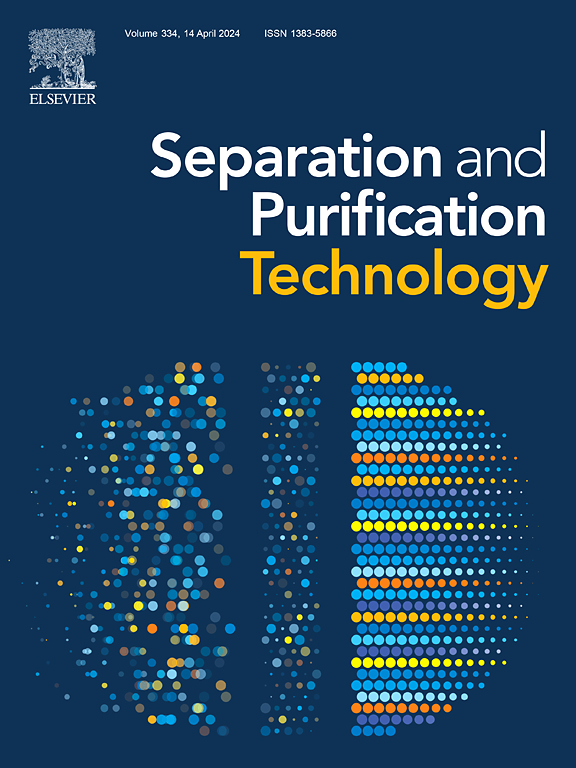One-step synthesis of reduced graphene oxide/activated carbon composite for efficient removal of per- and polyfluoroalkyl substances from drinking water: Adsorption mechanisms and DFT study
IF 8.1
1区 工程技术
Q1 ENGINEERING, CHEMICAL
引用次数: 0
Abstract
This study illustrates the synthesis, efficiency, and the mechanism of a novel reduced graphene oxide (RGO)/activated carbon (AC) (RGO/AC) composite to adsorb the lower concentration per- and polyfluoroalkyl substances (PFAS) in drinking water. The study integrates the experimental and Density Functional Theory (DFT) analyses, while emphasizing the role of graphene oxide (GO) on physicochemical properties of AC and enhancement of PFAS adsorption. The synthesized composites were characterized using several techniques prior to static evaluation for the adsorption of long and short-chain PFAS. Results indicated that RGO layers were uniformly anchored on AC surface. The RGO/AC composite exhibited larger specific surface area (SBET), higher mesoporous ratio, and contact angle than the AC synthesized under similar conditions. The C–H bonds on RGO/AC composite surface disappeared, while H content in RGO/AC composite was reduced compared to that of individual AC. The respective adsorption rates (K2) of perfluorooctane sulfonates (PFOS), perfluorooctanoic acid (PFOA), perfluorobutane sulfonate (PFBS) and perfluorobutyric acid (PFBA) by RGO/AC composite were 1.67, 1.70, 2.52, and 1.80 times higher than those of AC, individually. Meanwhile, the respective adsorption affinities (KF) of PFOS, PFOA, PFBS and PFBA using RGO/AC composite were 2.24, 2.14, 1.36 and 1.60 times higher than those of AC. PFAS molecules were adsorbed by RGO/AC composite through multilayer heterogeneous, spontaneous and exothermic process, where adsorption behavior of PFOS and PFOA was significantly altered. The hydrophobic interactions, electrostatic forces and hydrogen bonding were dominant between PFAS molecules and RGO/AC composite. Meanwhile, DFT simulation of PFAS molecular dynamics on RGO/AC composite consistently suggested the spontaneous adsorption. The RGO/AC composite would be a promising material for effectively removing PFAS from drinking water.

求助全文
约1分钟内获得全文
求助全文
来源期刊

Separation and Purification Technology
工程技术-工程:化工
CiteScore
14.00
自引率
12.80%
发文量
2347
审稿时长
43 days
期刊介绍:
Separation and Purification Technology is a premier journal committed to sharing innovative methods for separation and purification in chemical and environmental engineering, encompassing both homogeneous solutions and heterogeneous mixtures. Our scope includes the separation and/or purification of liquids, vapors, and gases, as well as carbon capture and separation techniques. However, it's important to note that methods solely intended for analytical purposes are not within the scope of the journal. Additionally, disciplines such as soil science, polymer science, and metallurgy fall outside the purview of Separation and Purification Technology. Join us in advancing the field of separation and purification methods for sustainable solutions in chemical and environmental engineering.
 求助内容:
求助内容: 应助结果提醒方式:
应助结果提醒方式:


